Celebrating Female Mathematicians
Female mathematicians have significantly contributed to mathematics and impacted society through their research and innovative ideas. Take a moment to celebrate a few of those influential women.
Start Your Free 45-Day Trial
Inspire students with Women’s History Month math activities
Is the next Katherine Johnson or Fan Chung sitting in your classroom? Inspire them during Women's History Month with math activities that recognize the work of female mathematicians.
- Tell the stories and achievements of female mathematicians.
- Use real-world examples of women's work in math-related fields.
- Assign groups to research and design Women in Math timelines.
- Create math-themed art inspired by women like Maryam Mirzakhani.
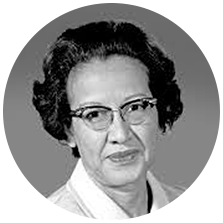
Katherine Johnson (1969)
Katherine Johnson Johnson was well known for her work with NASA. In 1960, she and engineer Ted Skopinski coauthored a report about the equations of orbital spaceflight that specified the spacecraft's landing position. It was the first time a woman in the Flight Research Division had received credit as an author of a research report. She did trajectory analysis for Freedom 7, America’s first human spaceflight. Johnson worked on orbital calculations for the Apollo Moon landing of 1969. Her work calculating flight paths and trajectories required differential equations and linear algebra.
Explore Solving Algebraic Equations 1 Gizmo
Photo credit: https://www.nasa.gov/centers-and-facilities/langley/katherine-johnson-biography/
.png)
Dr. Etta Zuber Falconer (1971)
Etta Zuber Falconer was an American mathematician and educator. She was one of the earliest African-American women to receive a Ph.D. in mathematics and is known for advanced research on number theory (1971) and its impacts on algebra. Falconer also advocated for earlier elementary math knowledge and education.
Encourage math education, like Falconer, and build math fact fluency with Reflex!
Photo credit: https://mathshistory.st-andrews.ac.uk/Biographies/Falconer/
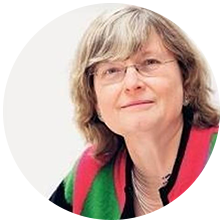
Ingrid Daubechies (1987)
Known as the “godmother of the digital image,” Ingrid Daubechies developed wavelets using mathematical tools. She was awarded the 2018 Fudan-Zhongzhi Science Award for her contribution to wavelet theory. That theory ultimately led to the first JPEG images!
Build critical fractions skills needed for advanced math with Frax.
Photo credit: https://math.duke.edu/ingrid-daubechies
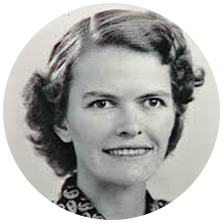
Julia Robinson (1983)
Julia Robinson was one of the first women to earn a Ph.D in mathematics from Berkeley in 1948. She is most famous for her work on Hilbert’s 10th problem, one of 23 mathematics problems that David Hilbert posed in 1900. Because of her contributions, Hilbert’s 10th problem was finally answered in 1970. She was the first female mathematician elected to the National Academy of Sciences, the first female president of the American Mathematics Society, and the first female mathematician to receive a MacArthur Foundation Fellowship.
Build foundational math fact fluency skills to tackle hard problems with Reflex.
Photo credit: https://jrmf.org/reserve/who-is-julia-robinson/
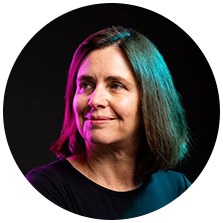
Shafi Goldwasser (1985)
When Shafi Goldwasser was a new graduate student in computer science at the University of California, Berkeley, in 1979, she focused on cryptography and algorithmic number theory. Along with her fellow Berkeley grad student Silvio Micali, she co-developed zero-knowledge proofs, a cornerstone of modern cryptography, used in secure digital transactions and blockchain technology.
Goldwasser also published a pioneering paper on zero-knowledge proofs in 1985.
Build critical fractions skills needed for advanced math with Frax.
Photo credit: https://www.technologyreview.com/2019/08/21/238665/shafi-goldwasser/
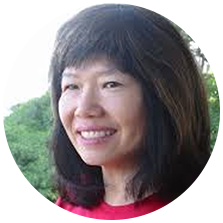
Fan Chung (1997)
Fan Chung completed her Ph.D. at the University of Pennsylvania in 1974. Her research interests are primarily in graph theory, combinatorics, and algorithm design. She helped develop spectral graph theory and published her book Spectral Graph Theory in 1997. Chung was awarded the Allendoerfer Award by the Mathematical Association of America in 1990 and by membership of the American Academy of Arts and Science in 1998.
Build algebra skills needed for spectral graph theory with Gizmos!
Explore Solving Linear Systems Gizmo
Photo credit: https://simons.berkeley.edu/people/fan-chung
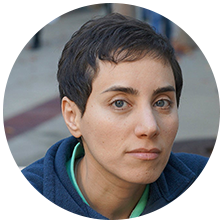
Maryam Mirzakhani (2014)
Maryam Mirzakhani was the first woman to be awarded a Fields Medal in 2014. Her work was theoretical. She was fascinated with describing the geometric and dynamic complexities of curved surfaces, like spheres and doughnut shapes, in great detail. In 2009, Mirzakhani joined the faculty of Stanford University and served as a professor of mathematics until her death.
Photo credit: https://news.stanford.edu/stories/2017/07/maryam-mirzakhani-stanford-mathematician-and-fields-medal-winner-dies
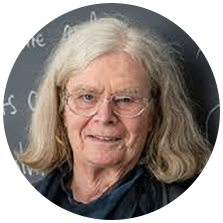
Karen Uhlenbeck (2019)
Karen Uhlenbeck was the first woman to win the Abel Prize in 2019. She revolutionized gauge theory, which plays a key role in physics, particularly in the theory of general relativity and quantum field theory. Uhlenbeck is a strong advocate for gender equality in science and mathematics. She co-founded the Institute’s Women and Mathematics program (WAM) in 1993 to recruit and empower women to lead in mathematics research throughout their academic careers.
Build foundational math skills with Reflex!
Photo credit: https://scientificwomen.net/women/karen-uhlenbeck-130
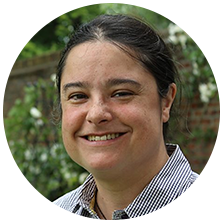
Julia Gog (2023)
UK-based mathematician Julia Gog is a Professor of Mathematical Biology at DAMTP, University of Cambridge Department, and the David N. Moore Fellow and Director of Studies in Mathematics at Queens' College, Cambridge. Her research is on infectious disease transmission and evolution, particularly influenza. She assisted the UK government with mathematical modeling to predict COVID-19 transmission, influencing UK public health policies.
Explore Theoretical and Experimental Probability Gizmo
Photo credit: https://www.bbc.co.uk/programmes/profiles/5HYNC5gQgw5LQGT0pRGhXsr/professor-julia-gog
Support math achievement with ExploreLearning math solutions
ExploreLearning math solutions focus on foundational skills that make the greatest impact on student success in math.
From math fact fluency and fractions to advanced concepts for deep exploration, we focus on critical math learning needs in engaging ways.




